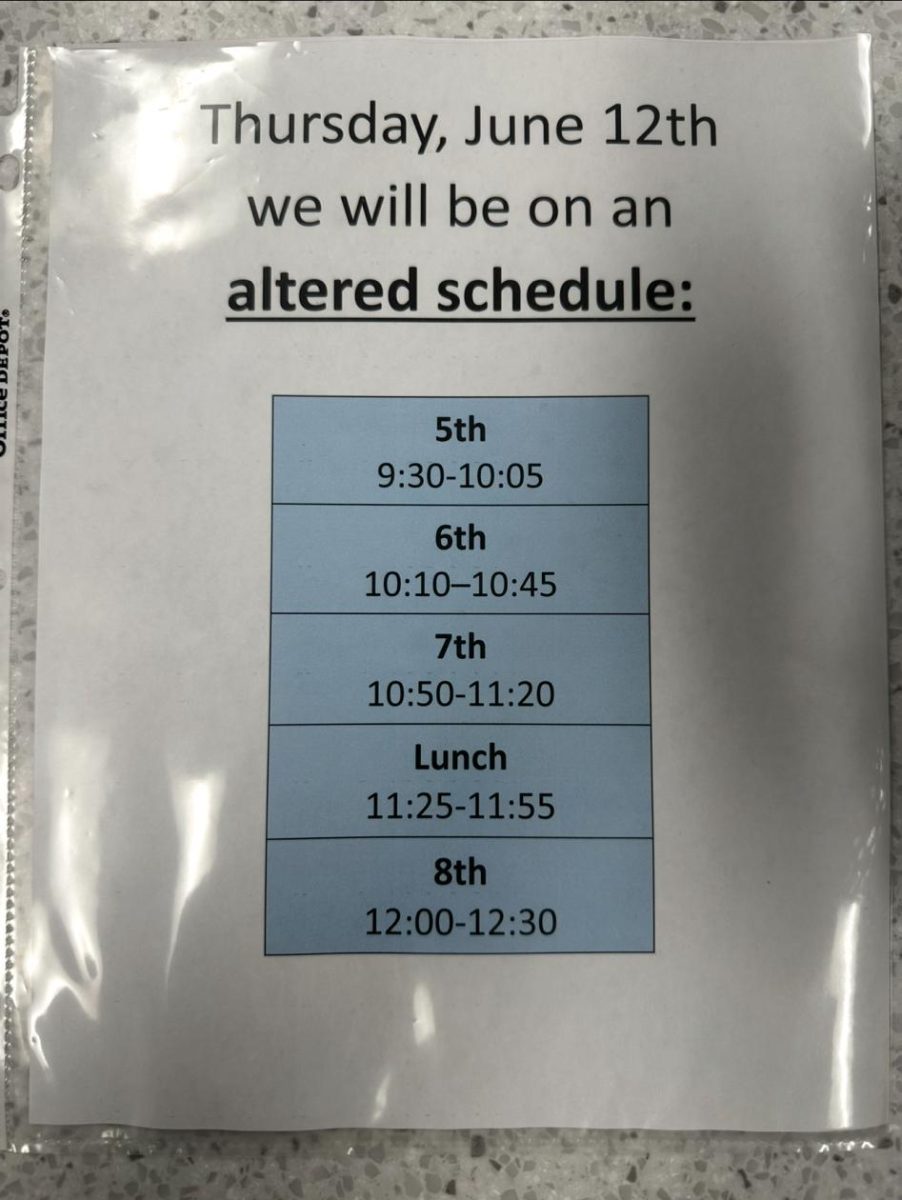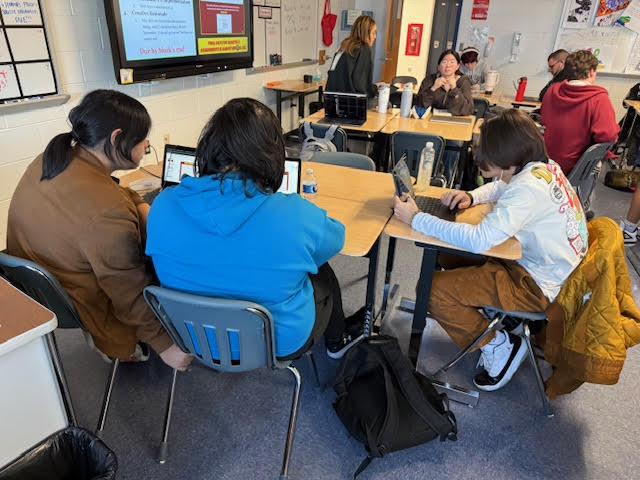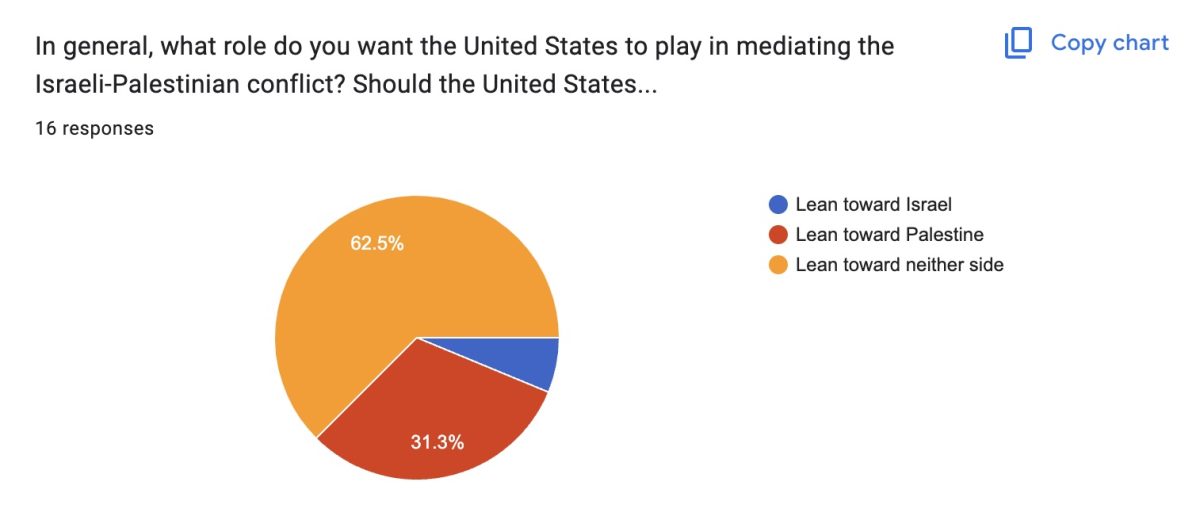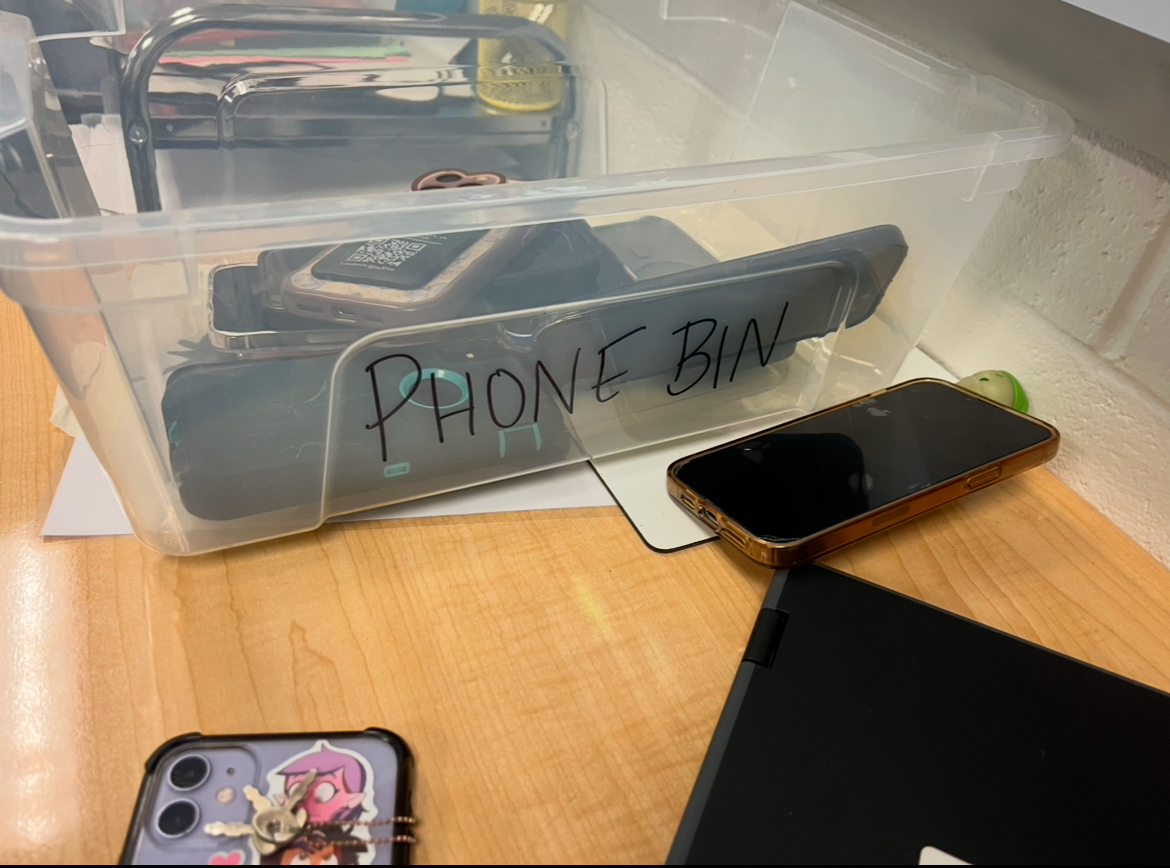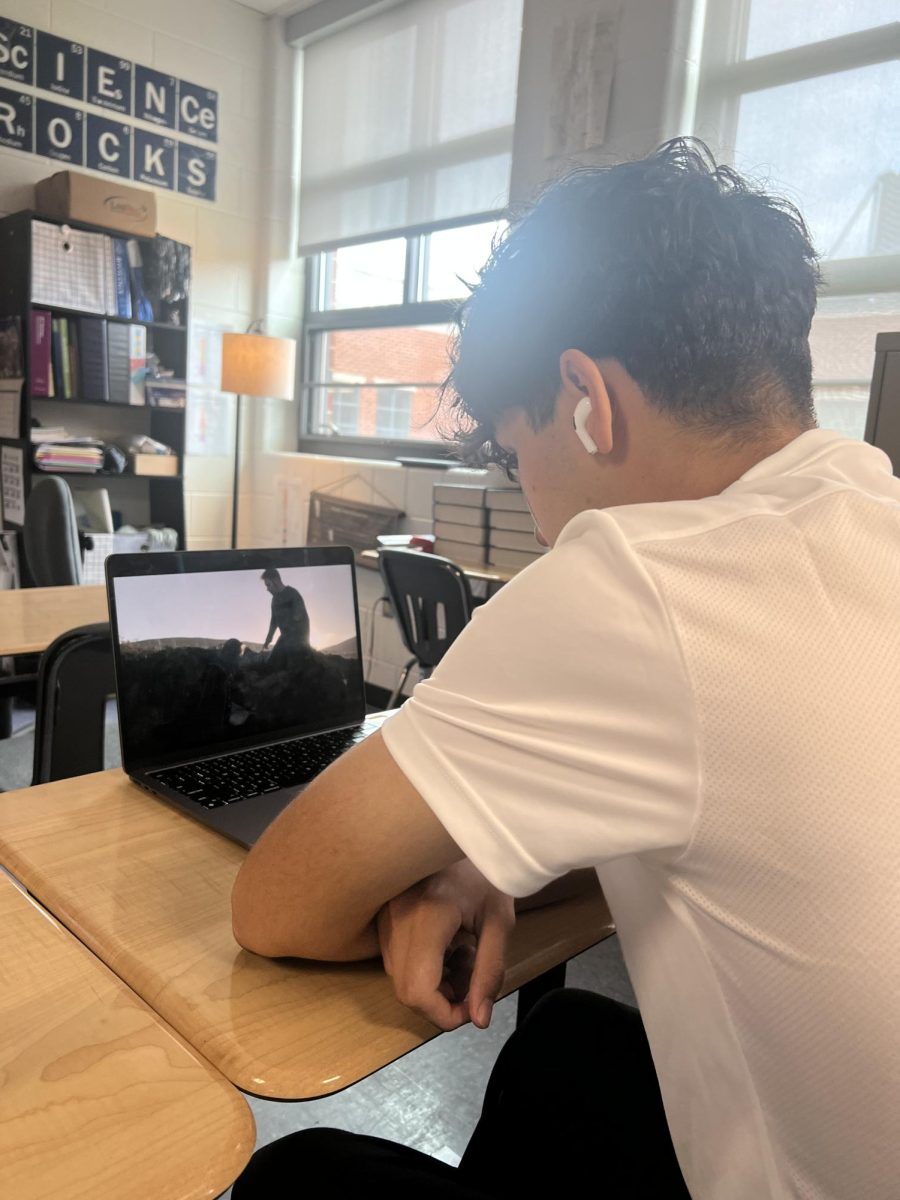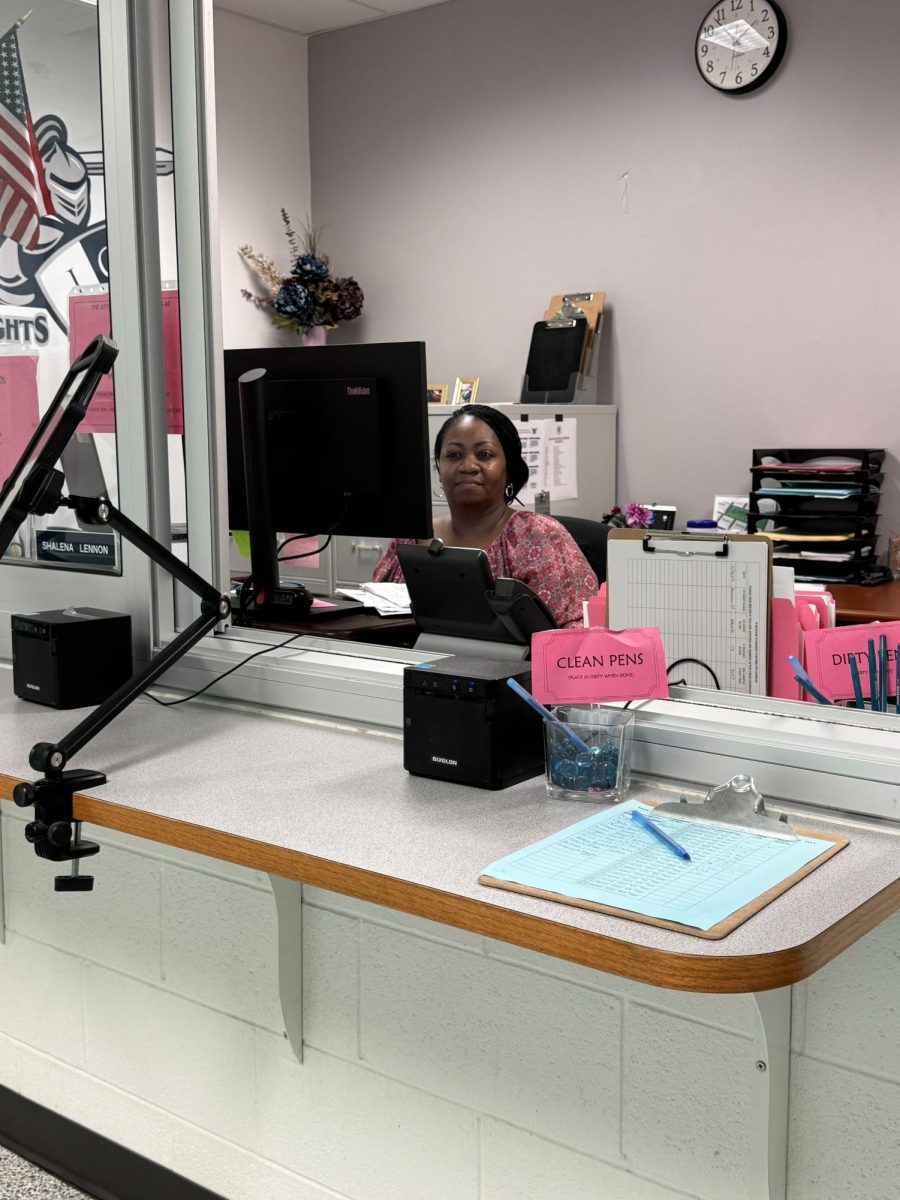In today’s digital world, devices such as smartphones and headphones have become an everyday necessity for students, widely appearing even during classes.
These digital devices are complex and serve as useful tools that can either provide a better learning experience or distraction in the classroom depending on their usage. At John Champe High School, the staff and students recognize the importance of finding a balance between using the educational potential of smartphones and reducing their distractive influences.
“I think it’s important to have balance with using devices in our classrooms,” sophomore Vaibhav Dwaraka said. “Students like me are responsible with using our phones for learning purposes, but are also aware of how they can be distracting if not managed properly.”
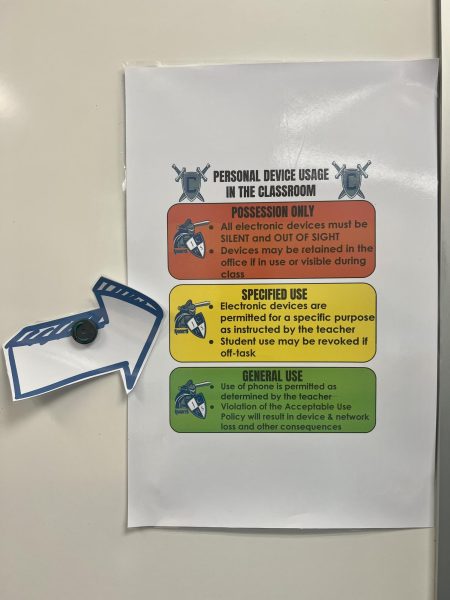
The phone policy at John Champe considers a different approach towards the use of technology within classroom environments. Students are authorized to carry and have their smartphones with them during school hours, but specific rules and guidelines vary in their usage. During class, all phones must be turned off and kept out of reach unless verbally permitted by the teacher for educational purposes. This refers to the ‘traffic light’ board teachers have in their room, where each color delivers explicit instructions. For example, if the traffic light was yellow, then students are only allowed to use their phones educationally. This approach allows teachers to incorporate technology into their lessons whilst simultaneously preventing distractions.
“The phone policy here at Champe is honestly more ‘laxed and unique. It’s neat how they allow us to have our phones with us but have clear rules for when we can use them in class,” sophomore Yunus Yilmaz said. “The traffic light system sounds like a smart way to make sure we’re using our phones for learning.”
Additionally, John Champe High School highlights the responsibility of digital citizenship. Throughout the school year, students are reminded of the quality expectations on appropriate phone usage and are encouraged to leverage them for research, collaboration, and productivity purposes. By promoting a culture of digital citizenship, students are prepared for the challenges and opportunities of the digital world.
“Digital citizenship is something that isn’t talked about oftenly, but should be taken seriously,” freshman Mahmoud Khattab said. “If this culture is promoted more, our school can help us use devices more responsibly for the future.”

In comparison to different phone policies at nearby high schools, John Champe has a more fair and balanced approach. At Lightridge High School, their policy takes on a more stricter approach towards smartphone usage. When students enter their classroom, they are immediately required to deposit their cellphones in either a pouch or bin to eliminate distractions. Although this policy targets the majority cause of distraction in class, it may potentially inhibit further learning opportunities and the regulation of self-discipline for students.
“Now in quarter four, I’d say that focus and engagement has plateaued,” English teacher Irene Moulton at Lightridge said. “For the students whose phone addiction was a problem before, it is still a problem – in other words, the policy had no impact on certain students; if asked, they would put it away for a few minutes then have it back out, ten be told to put it away, rinse and repeat.”
On the other hand, other high schools such as Loudoun Valley have granted full access with smartphones to some degree. While students are encouraged to exercise their discretion, Loudoun Valley has no explicit guidelines regarding phone usages during class. A potential benefit with this policy is that it opens further opportunities to create stronger relationships built on trust and integrity. However, increased temptation and distractions are twice as likely to happen, which can prevent students from achieving their academic goals.
“For the 23-24 school year, our school wide expectation is that students place their cell phones and earbuds in the designated space in each classroom,” the Loudoun Valley High School website states. Phones will not be accessible during instructional time or Viking Time. Students may use their phones and earbuds during class changes, study hall, and lunch.”
At Freedom High School, nearby both John Champe and Loudoun Valley, their phone policy can be seen as a hybrid mix. The students are allowed to hold onto their phones, but are required to be placed face down on their desks while in class. This approach allows quick access for students during emergencies, but it also minimizes additional temptation and distraction during educational lessons. Although this policy handles device usage at a reasonable level, some students may argue that the policy neglects their freedom by being highly restrictive.
“Unfortunately, I was informed by our communications department that they or we are not allowed to share comments regarding the phone policy based on safety and security.” assistant principal Darnell Barbour said when asked about Freedom’s phone policy.
As the rapid evolution of technology continues, high schools will face the future challenge of creating phone policies to find the line between balancing the educational potential of smart devices and lessening their disruptive effects. While there is no simple solution to fix this issue, John Champe High School’s approach provides a better experience for its staff and students.
“Going through and addressing the challenges with smartphones is a must for high schools to have a better learning environment,” Dwaraka said. “It’s a necessary step towards managing technology in the classroom productively and effectively.”
By encouraging teachers to appropriately implement technology into their lessons while spreading the influence of cultural responsibility and digital citizenship, John Champe’s students can be better prepared for future success in an advanced world. In today’s society where technological advancement is highly crucial, high schools like John Champe must continue to adapt their phone policies in order to not be left behind, and to meet the evolving needs of students while maintaining a focus on academic excellence and student well-being.
“Our school definitely supports the integration of technology with our learning, but they also highlight the importance of having responsibility with our gadgets.” Yilmaz said.


